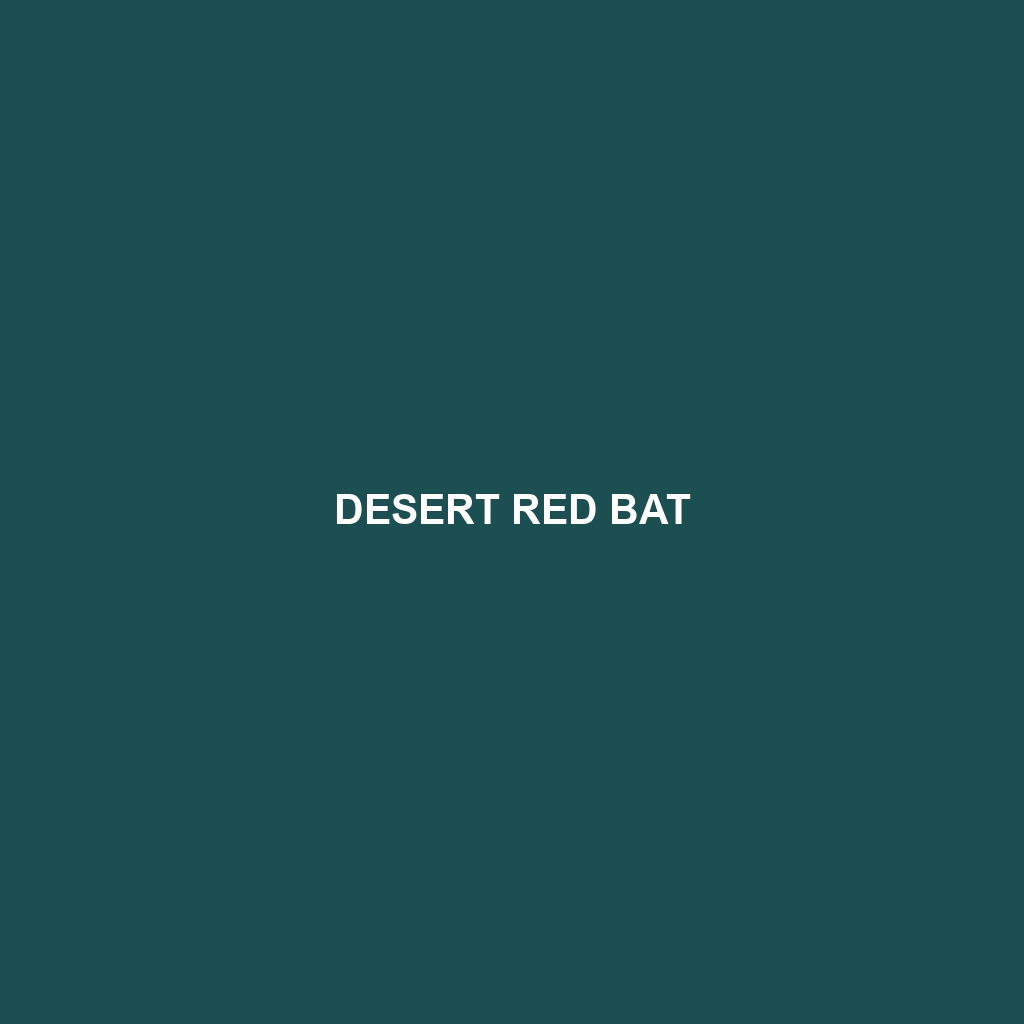Desert Red Bat
Common Name: Desert Red Bat
Scientific Name: Lasiurus blossevillii
Habitat
The Desert Red Bat primarily inhabits arid regions across North America, particularly in the southwestern United States and parts of northern Mexico. Its preferred habitats include deserts, grasslands, and open woodlands where it can roost in trees and shrubs, utilizing the dense foliage for protection and hunting.
Physical Characteristics
This species is known for its striking reddish-brown fur, which provides excellent camouflage in its arid habitat. Adult Desert Red Bats typically measure between 9.5 to 11.5 cm in body length, with a wingspan of around 28 to 30 cm. They possess distinctive long ears and a flat, broad head, which enhances their ability to detect prey. Their fur is soft and dense, making them well-adapted to varying temperatures.
Behavior
Desert Red Bats are primarily nocturnal, emerging at dusk to hunt. They are agile fliers and often exhibit acrobatic behavior while foraging for insects in mid-air. Their unique hunting technique involves swooping down to catch prey from beneath the foliage. During the day, they rest in trees, often hanging from leaves or branches, which helps them evade predators.
Diet
The Desert Red Bat feeds predominantly on moths, beetles, and other small insects. They play a crucial role in controlling insect populations in their habitats. This bat species uses echolocation to locate and capture prey, making them effective hunters. Their diet can vary depending on the season, with a notable preference for moths during warmer months.
Reproduction
Breeding occurs from late spring to early summer, with females typically giving birth to one to four pups in early summer. The young are born blind and hairless, relying on their mother for nourishment and protection. The pups mature rapidly, starting to fly and forage independently within a month.
Conservation Status
Currently classified as Least Concern by the IUCN, the Desert Red Bat’s population is stable, though it faces threats from habitat destruction and climate change. Conservation efforts are in place to monitor their habitats and promote biodiversity within their range.
Interesting Facts
Desert Red Bats are known for their striking coloration and are often confused with other bat species. They can be found roosting in unique locations, such as tree foliage and urban structures, showcasing their adaptability. Interestingly, some studies suggest that they can migrate long distances in search of food and suitable roosting sites.
Role in Ecosystem
As insectivores, Desert Red Bats play a vital role in their ecosystem by helping manage insect populations. Their foraging habits support the balance of various species, making them essential contributors to the health of their habitats. Additionally, they serve as prey for larger predators, thus maintaining the food web.
